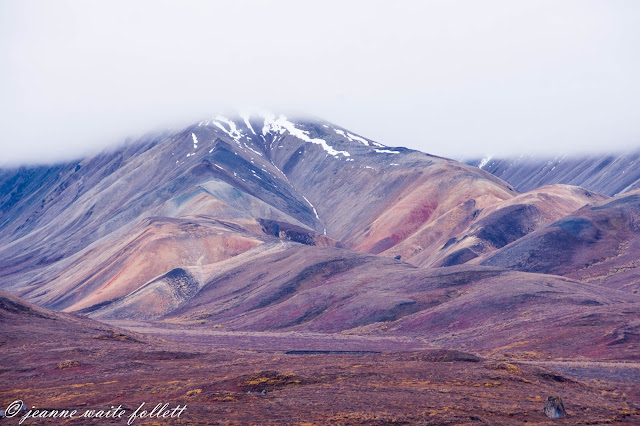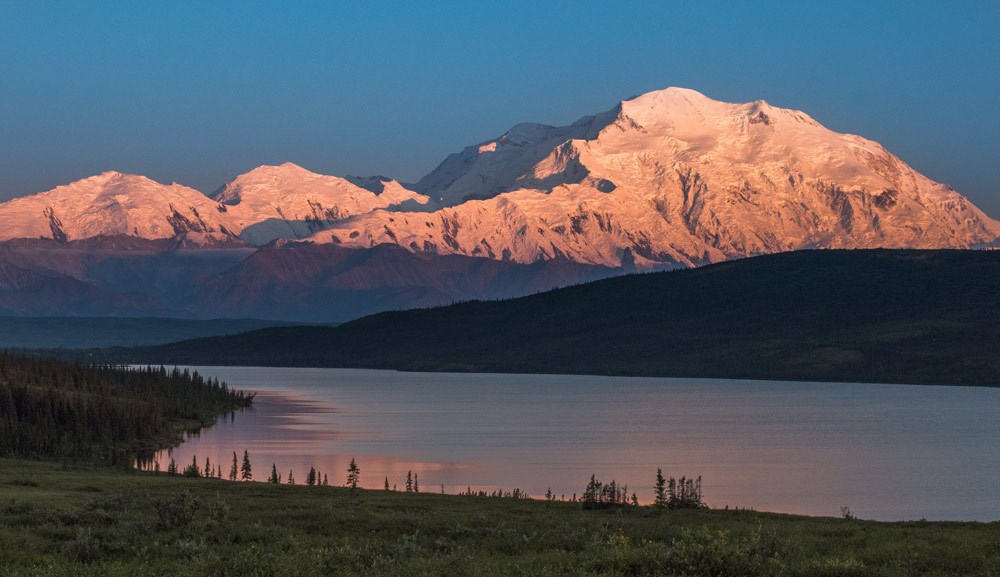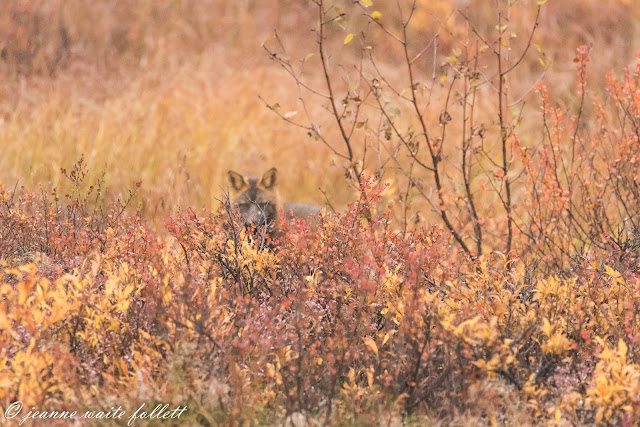Outward Bound
Kantishna.
Kantishna. The word swirled in
my head like ping pong balls in a whirlwind.
There are memories associated with that word and I’m trying to bring
them to the surface.
Mining, definitely mining. But more…
I’m at the end of the 92-mile road through Denali
National Park, looking around before I head back through the park.
I’m standing outside a cabin that once belonged to a
legend in the Kantishna district, Fannie Quigley. Known for hiking long distances to prospect
for precious minerals and stake claims, her cooking, and her troublesome
consumption of vast quantities of alcohol, the cabin preserves some depiction
of the hard-scrabble life of Alaskan pioneers.
 |
| On a Moose Hunt in the Kantishna Country, L-R, Fanny Quigley, Joe Quigley, Ruth Carson, and Joe Dalton, circa 1919.
Photo Credit: Stephen Foster Collection, University of Alaska Archives. Photo published in Bundtzen (1978) |
It is a boon for Doris, of the National Park Service, to
spend summers here, visiting with tourists and talking about Fannie. When I first saw her, she was sitting on the
front porch, book in hand.
As we talked, hundreds, if not thousands, of sandhill
cranes fly overhead in large circles, gaining altitude and assimilating newcomers into the flock
as they commence their southern migration.
That reminds me that I, too, must be on my way. Though I am allowed to remain in the park until midnight, I want to make the journey during daylight hours for the sake of photographing birds and animals.
I take my leave of Doris, envying her job in this
beautiful place, and head east on the muddy gravel road. I hadn’t gone far when I saw a sign, and all
those ping pong balls coalesced, settled, and I remembered.
The sign read Camp Denali. Bingo!
Ginny and Ceil. I recalled stories
from my friend Nancy Simmerman, a professional photographer from the days before
digital photography, who published many coffee table books on Alaska.
Nancy was long-time friends with Ginny and Celia,
otherwise and more correctly known as Ginny Wood and Celia Hunter. She had spent many days with them at Camp
Denali, which was not easily accessible.
Nancy spoke of Nordic skiing through Denali Park, then known as Mt.
McKinley National Park, and traveling with park rangers and their dog teams as
they made winter patrols.
Ginny and Ceil, along with Ginny’s husband, built a
small lodge for adventurous travelers, probably the first ecotourism venture in
Alaska. Both pilots with the Women
Airforce Service, the two looked around the lower 48 states before deciding it
was too crowded, and turned their sights north.
 |
| Mud on the running board. |
They homesteaded 67 acres on a ridge with a
spectacular view of Denali, harvesting logs to build with, and scrounging
whatever they needed.
The duo lived off the land as much as they could, and
operating the lodge for 25 years. After
selling it, they devoted themselves to conservation of wildlife and wildlands,
becoming known as pioneers in this endeavor.
Their life histories are fascinating—women engaging in occupations and
activities that were most unusual for the times.
I stopped and took a photo of their driveway, which
was blocked as the lodge was closed for the season. Now it is one of the upscale lodges that
cater to tourists in this area. Access
if either by special permit and transportation through the park, or by air
where small planes that land at the Kantishna airstrip.
And, the scenery was phenomenal.
 |
| I saw this fellow on his bike at about Mile 80 as I was inward bound. Here, he is much, much closer to the entrance of the park. |
 |
| Handlers taking the Denali dog team for walks. |



































































